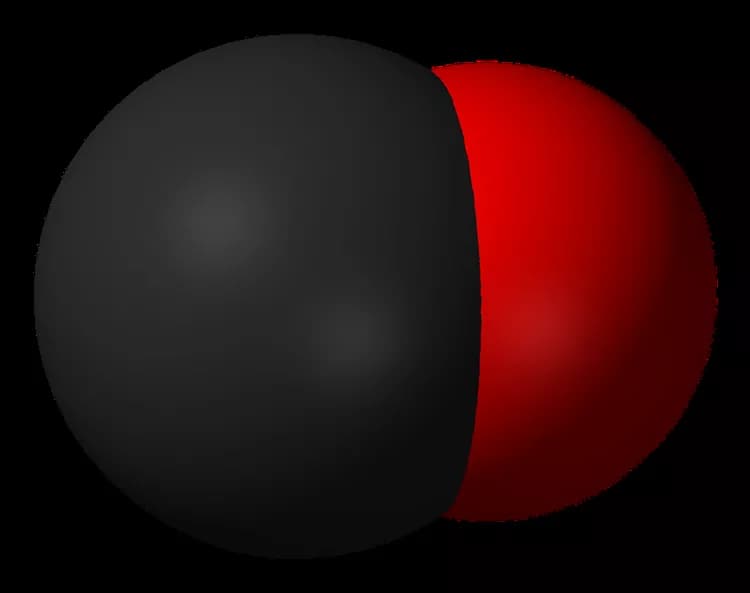
Carbon Dioxide Levels Lower Than Thought During Super Greenhouse Period
Concentration of carbon dioxide during an intense period of global warmth may have been as low as half the level previously suggested by scientists, according to a new Dartmouth College study.
The study found that carbon dioxide may have been less than 1000 parts per million, or ppm, during the Earth's early Eocene period. This runs counter to thinking that concentration levels were as high as 2000 ppm in the same time frame.
By comparison, current levels of carbon dioxide observed at NOAA's Mauna Loa Observatory are around 400 ppm.
"This research provides important information about the planet's climate past and adds an important chapter to the Earth's history book," said Ying Cui, Obering Postdoctoral Fellow at Dartmouth College.
Climate researchers focus on the early Eocene, a so-called "super greenhouse" period, to better understand how the Earth historically responds to changes in carbon dioxide levels, and to help make better climate projections. Both the Arctic and Antarctic were ice-free in this time period as temperatures averaged about 10 degrees Celsius warmer than present day.
The early Eocene was also characterized by five periods of extreme warmth -- known as hyperthermals -- that occurred between 52-56 million years ago when the Earth warmed an additional 2 C -- 8 C above the already higher temperatures.
Although there were no cars or power plants 56 million years ago, the same carbon rich in the isotope carbon-12 was released into the atmosphere. Up until now, researchers have grappled with where that carbon came from, what triggered its release, and to what extent carbon dioxide accounted for warming relative to other greenhouse gases.
Unable to access information on carbon dioxide from ice cores that only date back approximately 800,000 years, the research team used a new method to reconstruct levels of carbon dioxide associated with the temperature spikes within the early Eocene.
The Dartmouth research result was derived by assessing past carbon dioxide concentrations using sediment samples found in terrestrial and deep-sea drilling sites. The ratio of carbon-12 to carbon-13 isotopes in those samples helped the team determine that the most likely source of the carbon came from thawing permafrost during the period studied.
"This changes our understanding of what the concentration of carbon dioxide should be in relationship to global temperature as well as how we should revisit climate models in order to better project future climate change," Cui said.
While the Dartmouth research, published in the journal Earth and Planetary Science Letters, finds that the carbon was most likely released by permafrost thaw, there is still question as to what triggered the warming that caused the release of extra carbon into the atmosphere. Separate research points to the roles of extreme volcanic activity and water vapor during Earth's earlier warming periods.
"The challenge is to reconstruct what the past carbon dioxide concentration is and to utilize these geochemistry proxies the best we can -- essentially, how can we best interpret these records using geological archives," said Cui.
Although focusing on a timeframe that is over 50 million years ago, Cui says the research relates directly to efforts to understand the Earth's current warming trend, and to project how human activities and other natural dynamics could impact future warming.
"The geologic past can provide a useful insight into our understanding of current and future environmental change," said Cui. "Policy makers, economists and others who study projections on temperature can utilize this information to see how ecosystems recover after rapid change of climate and use it as lessons for the future."
The research team hopes to use the new technique to broaden understanding of the role of carbon dioxide for a longer stretch of Earth's history.
Materials provided by Dartmouth College. Note: Content may be edited for style and length.
Disclaimer: DoveMed is not responsible for the accuracy of the adapted version of news releases posted to DoveMed by contributing universities and institutions.
References:
Ying Cui, Brian A. Schubert. (2017). Atmospheric p CO 2 reconstructed across five early Eocene global warming events. Earth and Planetary Science Letters, 2017; 478: 225 DOI: 10.1016/j.epsl.2017.08.038
Related Articles
Test Your Knowledge
Asked by users
Related Centers
Related Specialties
Related Physicians
Related Procedures
Related Resources
Join DoveHubs
and connect with fellow professionals

0 Comments
Please log in to post a comment.